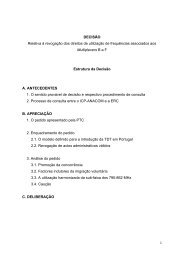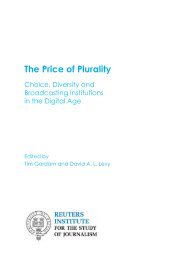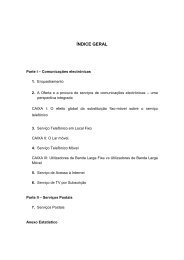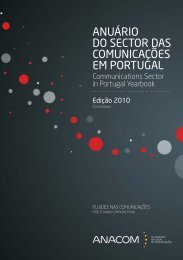The Digital Fact Book - Quantel
The Digital Fact Book - Quantel
The Digital Fact Book - Quantel
- No tags were found...
You also want an ePaper? Increase the reach of your titles
YUMPU automatically turns print PDFs into web optimized ePapers that Google loves.
Non drop-frame timecodeTimecode that does not use drop-frame and always identifies 30 frames per second. This waythe timecode running time will not exactly match normal time unless it is an exact 30f/s.<strong>The</strong> mismatch amounts to 1:1000, an 18-frame overrun every 10 minutes. This applieswhere 59.94, 29,97 or 23.976 picture rates are used in 525/60 systems as well as DTV.See also: 1000/1001, Drop-frame timecodeNonlinear (editing)Nonlinear means not linear – that the recording medium is not tape and editing canbe performed in a non-linear sequence – not necessarily the sequence of the program.It describes editing with quick access to source clips and recording space – usually usingcomputer disks to store footage. This removes the spooling and pre-rolls of VTR operationsso greatly increasing the speed of work. Yet greater speed and flexibility are possible withrealtime random access to any frame (true random access).See also: FrameMagic, Linear (editing), On-line (editing), True random accessNNTFSNew Technology File System – the standard file system of Windows NT and its descendantsWindows 2000, Windows XP, Windows Server 2003 and Windows Vista. It replaced Microsoft’sFAT file system used in MS-DOS and earlier Windows versions. Advantages include improvedmetadata support, advanced data structures, reliability, disk space use and extensions such assecurity access control lists (who can access), permitted operations and file system journalingthat logs file changes. Full details are a Microsoft trade secret.NTSC<strong>The</strong> National Television Systems Committee. A U.S. broadcast engineering advisory group.NTSC (television standard)<strong>The</strong> analog color television system used in the USA, Canada, Mexico, Japan and more,where NTSC M is the broadcast standard (M defining the 525/60 line and field format).It was defined by the NTSC in 1953. NTSC is rapidly becoming part of history, with analogswitch-off scheduled to happen in April 2009 in the USA. Note that ‘NTSC’ is often incorrectlyused to describe the 525-line format even when it is in component or digital form.NVODNear Video On Demand – rapid access to program material on demand often achievedby providing the same program on a number of channels with staggered start times.Many of the hundreds of TV channels now on offer will be made up of NVOD services.<strong>The</strong>se are delivered by transmission servers.134







